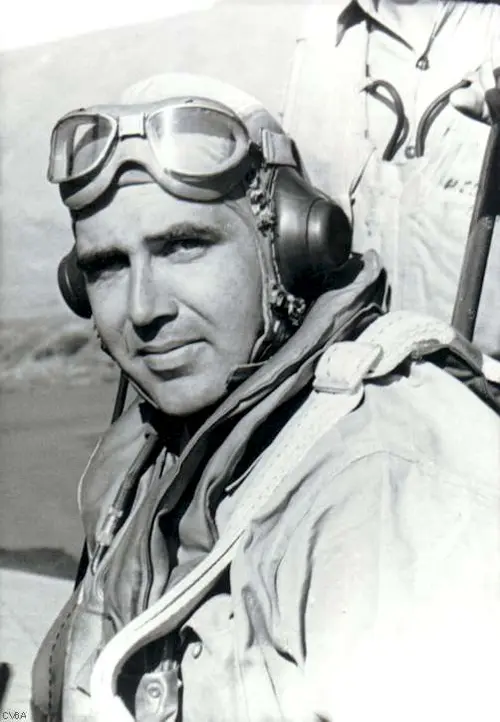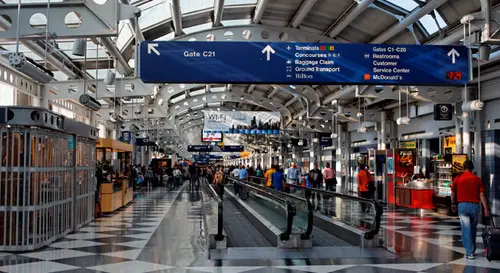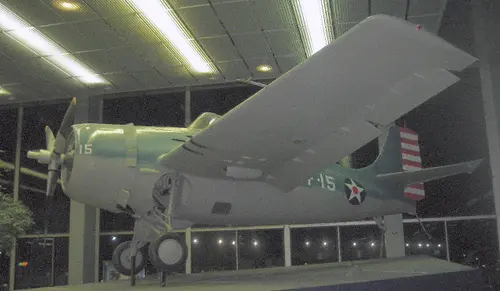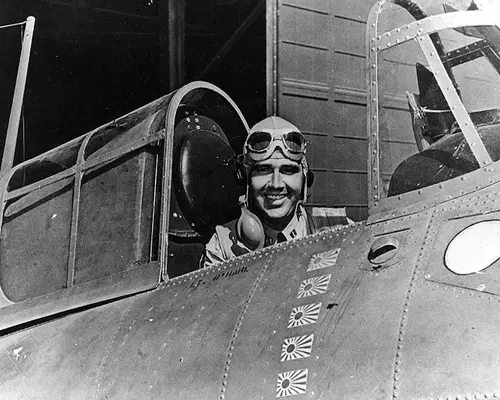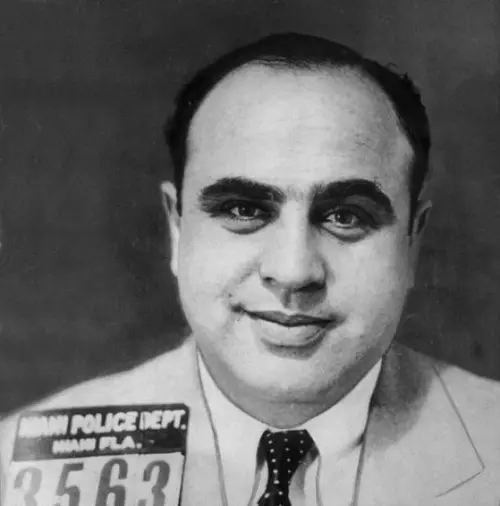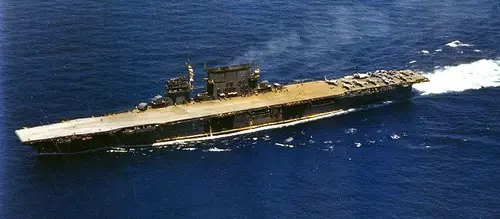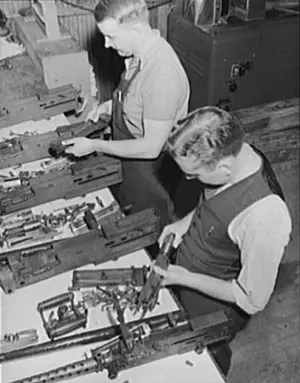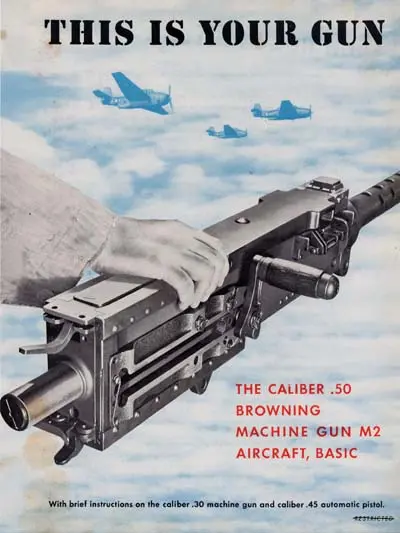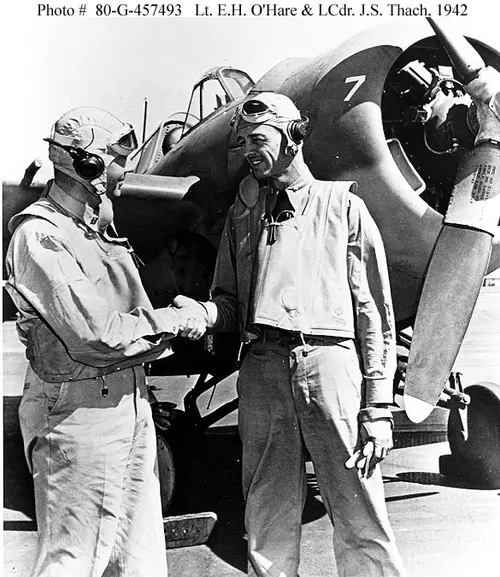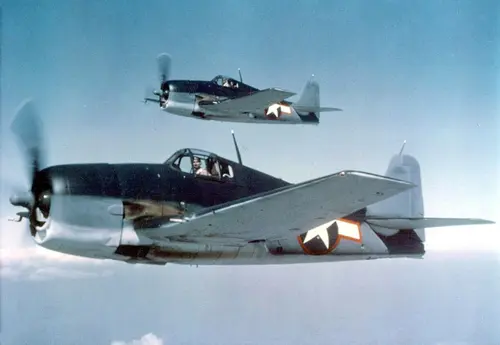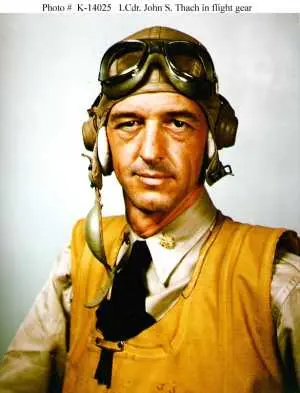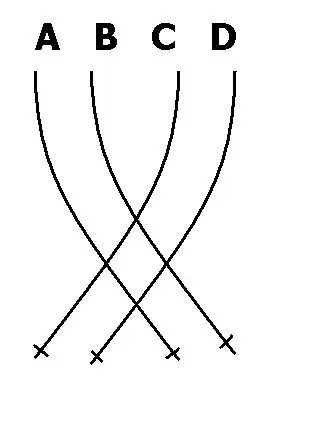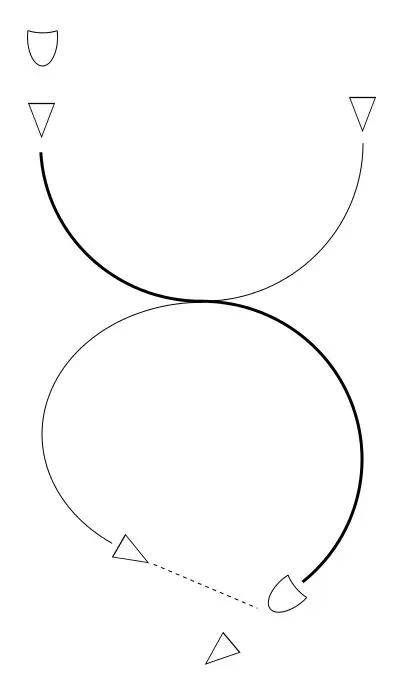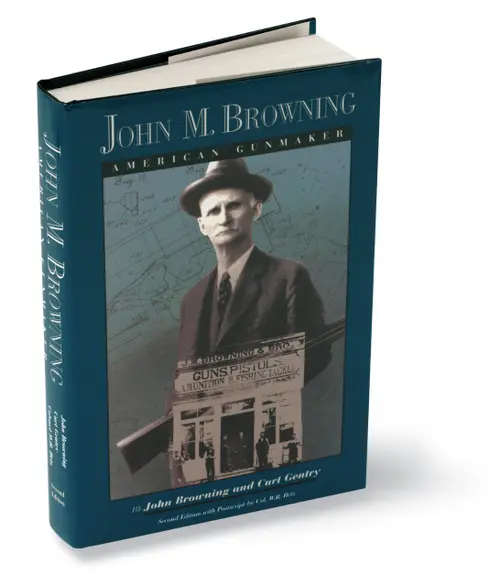Six Minutes to Glory.
Have you ever wondered how the O'Hare International Airport got its name? It is all part of an incredible story of courage, skill and sacrifice.
The Story of Edward “Butch” O’Hare - America’s First Air Combat Ace of WWII
If you travel by commercial airlines on any more than a casual basis, you’ve probably passed through, or changed planes at, or in bad weather gotten stuck in Chicago’s O’Hare International Airport. One of the largest and busiest airports in the world, O’Hare serves as a hub and connection for flights bound to and from all points of the compass.
Inside Chicago’s sprawling and always busy O’Hare Airport. Chicago’s O’Hare Airport photo.
And as you’ve rushed down the concourse in the west end of Terminal 2 to make connections with your next flight (and then perhaps wandered around for a couple hours waiting for it to arrive) you may have noticed a restored WWII-era Grumman F4F-3 Wildcat fighter painted in US Navy gray.
If you take an additional moment to read some of the captions on the display, you’ll learn the heroic tale of LTCDR Edward ‘Butch” O’Hare, America’s first air combat ace and winner of the Medal of Honor during WWII. And you’ll learn how he used his Wildcat’s four .50 caliber machine guns, personally designed near the end of WWI by John M. Browning himself to splash a bevy of enemy bombers. In the process, O’Hare probably saved the American fleet carrier USS Lexington.
The US Navy Grumman F4F-3 Wildcat fighter on display at O’Hare Airport. While this plane actually crashed into Lake Michigan during a training flight and was later recovered and restored, its markings match those on the same type aircraft flown in combat during 1942 by LT Edward “Butch” O’Hare. Wikipedia photo.
US Navy LT Edward “Butch” O’Hare has plenty to smile about, having become the first American ace in just six minutes of air combat in the Pacific on the afternoon of 20 February 1942. National Archives photo.
The "Butch" O'Hare Story.
Here’s Butch O’Hare’s story. (And in case you haven’t already made the connection, Chicago’s O’Hare Airport is named in his honor.)
Edward “Butch” O’Hare was born on March 13, 1914. His father, also named Edward O’Hare, was a lawyer in Prohibition-era Chicago. One of the elder O’Hare’s more colorful legal clients was a widely-known Chicago “businessman” by the name of Al Capone.
In fact, it’s been reported that the source of the information that finally helped put Capone behind bars for federal income tax evasion was Mr. O’Hare himself. (Perhaps it is no coincidence that in 1939, a week before Capone was scheduled to be released from federal prison, the elder O’Hare was gunned down in a drive-by shooting. The crime was never solved.)
The younger O’Hare graduated from The US Naval Academy at Annapolis in 1937. In 1939 he began training as a naval aviator and earned his gold wings the following year.
One of the elder O’Hare’s better-known legal clients, Al Capone, in an original booking photo from the Miami Police Department. Wikipedia photo.
The fleet carrier USS Saratoga underway in the Pacific, circa 1942. US Navy photo.
ENS O’Hare’s first flight assignment was to VF-3 squadron on the USS Saratoga. The squadron’s XO was LT John Thach, the inventor of the famous “Thach Weave” two plane air combat maneuver. (Make sure you read the sidebar on Thach that follows this article.)
Thach, seeing the young aviator’s exceptional talent behind the stick mentored Butch O’Hare in both fighter tactics and gunnery using the .50 caliber Browning machine guns that were standard equipment on virtually every US and Allied combat aircraft flown from the early 1920s through the late 1950s. More that half of VF-3’s aviators, including O’Hare earned the coveted “E” rating for gunnery excellence.
Even as the fires were still burning at Pearl Harbor on December 8, 1941, O’Hare was deployed with VF-3 aboard Saratoga. A month later, as O’Hare and his fellow pilots were eating dinner in the wardroom an enemy torpedo slammed home, badly damaging their carrier and requiring VF-3 to transfer their flight operations to the USS Lexington, the famous Lady Lex.
Workmen assemble Browning .30 and .50 caliber aircraft machine guns. National Archives photo.
Shown, cover of instruction service manual for aircraft-mounted M2 class machine guns.
Shown: John Moses Browning — the genius designer and inventor — testing one of his 50 caliber M2 variations.
The USS Lexington, the famous “Lady Lex” underway in the Pacific. Note the carrier’s fully loaded flight deck. US Navy photo.
Only O’Hare and his Wildcat’s four .50 caliber Browning machine guns stood between the enemy aircraft and the Lady Lex.
On the afternoon of 20 February 1942, radar from the Lexington picked up several formations of inbound enemy aircraft coming from several different directions. Numerous US aircraft were launched from the Lexington in response, until only two fighter planes and their pilots were left to protect his ship from attack, LT O’Hare and his wingman, LT Marion “Duff” Dufilho.
Both launched and pressed their Wildcat’s throttles to the stops as they sped to intercept the enemy. They intercepted an enemy flight of eight twin engine “Betty” bombers at 1500 feet and only nine miles out. Then “Duff’s” guns jammed.
Only O’Hare and his Wildcat’s four .50 caliber Browning machine guns stood between the enemy aircraft and the Lady Lex. So Butch pressed home his attack with courage, fury and precision.
None of the enemy’s bombs hit the Lexington.
At least three (and perhaps as many as five) of the enemy Bettys immediately fell in flames as a result of O’Hare’s marksmanship. At least two more were seriously damaged and were finished off by fellow aviators or crashed into the sea.
By the end of the six minute engagement the fighting formation had moved so close to the US carrier that O’Hare’s plane even took friendly fire from one of the Lady Lex’s shipboard gunners. By then VF-3’s squadron XO, LCDR Thach was also on the scene and later reported that he saw three enemy bombers on fire and in fatal dives or spins, all at the same time.
LT Butch O’Hare and LCDR John Thach shake hands after a successful mission together. US Navy photo.
“You build them, we’ll fly them and between us we can’t be beaten.”
It was very likely that O’Hare’s heroic efforts probably saved the Lexington from serious damage or even total destruction.
Once safely back aboard the Lexington, all hands took stock of the situation. O’Hare’s demonstration of courage, airmanship and gunnery had been outstanding. Admiral Brown and Captain Sherman, the Lexington’s CO both concluded it was very likely that O’Hare’s heroic efforts probably saved the carrier from serious damage or even total destruction. Since America had only a handful of fast fleet carriers the loss of any one of them would have dealt a severe blow to US naval operations throughout the Pacific.
"(O’Hare was)…modest, inarticulate, humorous, terribly nice and more than a little embarrassed by the whole thing."
At the end of March LT. O’Hare returned to Pearl Harbor to a hero’s welcome. He was soon ordered stateside and, as America’s first air ace of the conflict toured the nation, visiting defense plants and giving morale and war bond speeches. As he wrote to the dedicated employees of the Grumman aircraft plant on Long Island where his Wildcat fighter was built, “You build them, we’ll fly them and between us we can’t be beaten.”
On 21 April 1942, O’Hare was awarded the Medal of Honor in a White House ceremony with President Franklin D. Roosevelt. He was also promoted to the rank of lieutenant commander. As a humble hero, Butch O'Hare was described in news accounts of the ceremony as "…Modest, inarticulate, humorous, terribly nice and more than a little embarrassed by the whole thing."
LCDR O’Hare returned to Hawaii in June of 1942, assuming command of VF-3 from his mentor, LCDR Thach. US military doctrine at the time dictated that the Navy’s best combat pilots be rotated into training slots to pass on their hard-learned lessons to the next generation of naval aviators.
A pair of Grumman F6F-3 Hellcats of the US Navy aloft above the Pacific during WWII. US Navy photo.
In 1943 O’Hare returned to combat operations. VF-3 swapped squadron designations with VF-6 and many of the unit’s aviators also traded in their Wildcats in for the newer and more powerful Grumman F6F-3 Hellcat. Embarked aboard the USS Independence, VF-6 engaged in combat operations in the Marcus Islands. For these actions O’Hare was awarded the Distinguished Flying Cross, followed by a gold star in lieu of a second DFC for his work in operations near Wake Island.
In 1943 LCDR Butch O’Hare was flying a Grumman F6F-3 Hellcat as CAG aboard the USS Enterprise. US Navy photo.
It is still uncertain what really happened to Butch O’Hare.
LCDR O’Hare was soon named as Commander Air Group (CAG) aboard the USS Enterprise. Even as head of all air operations aboard the ship, O’Hare was not one to shirk combat duties. On the dark night of 26 November 1943, during operations in support the US invasion of the Gilbert Islands, Butch O’Hare went aloft from Enterprise to intercept a group of land-based enemy bombers on what was to be his last mission.
It is still uncertain what really happened to Butch O’Hare. Some say he was caught in a blistering crossfire between US Navy and enemy planes. Other say that the gunner on an enemy “Betty” bomber finally did him in. Whatever the reason, Butch O’Hare was gone, embraced by the dark blue waters of the Pacific. Neither he nor his aircraft were ever found.
The name of Butch O’Hare lives on.
But the name of Butch O’Hare lives on. So next time you fly through Chicago’s O’Hare International, make sure you allow some extra time to visit the Grumman Wildcat on display in Terminal 2.
And please take a moment to say a quiet “thank you” to all the hundreds of rhousands of "Butch O’Hares" who have willingly put their lives on the line to defend your freedom, and especially to those who sacrificed all.
Outflying the Enemy - The Famous Thach Weave
As America was suddenly thrust into WWII, forward-looking aviators and tacticians were desperate to develop new air combat maneuvers that would help level the playing field (or better yet, tilt it in the American’s favor) when engaging the enemy’s technically superior fighter aircraft like the Zero in their slower F4F Wildcats.
One such innovator was the US Navy’s LCDR John Thach, XO of VF-3, who created what soon became known as the “Thach Weave.”
As described in Wikipedia, “It is a tactical formation maneuver in which two or more allied planes would weave in regularly intersecting flight paths to lure an enemy into focusing on one plane, while the targeted pilot's wingman would come into position to attack the pursuer.”
“It was executed either by two fighter aircraft side-by-side or by two pairs of fighters flying together. When an enemy aircraft chose one fighter as his target (the "bait" fighter; his wingman being the "hook"), the two wingmen turned in towards each other. After crossing paths, and once their separation was great enough, they would then repeat the exercise, again turning in towards each other, bringing the enemy plane into the hook's sights. A correctly executed Thach Weave (assuming the bait was taken and followed) left little chance of escape to even the most maneuverable opponent.”
LCDR John Thach, XO of VF-3 and inventor of the Thach Weave. US Navy photo.
A four-plane formation executing the Thach Weave. Wikipedia diagram.
Using the Thach Weave, once an enemy plane commits to attacking one aircraft, his wingman swings around and brings the attacker into his gunsight. Wikipedia diagram.
Thach needed the best young pilot in VF-3 to help him test the idea in the air and find any potential flaws or weaknesses. The aviator he chose to assist him was LT Butch O’Hare. As Wikipedia further explains, “Trying a series of mock attacks, O'Hare found that in every instance Thach's fighters, despite their power handicap, had either ruined his attack or actually maneuvered into position to shoot back. After landing, O'Hare excitedly congratulated Thach. ‘Skipper, it really worked,’ O’Hare reported. ‘I couldn't make any attack without seeing the nose of one of your airplanes pointed at me.’ ”
The Thach Weave quickly became the standard air combat maneuver for the US Navy in WWII, and was soon adopted by US Army and USMC pilots as well. The Weave remained the aviator’s go-to maneuver during air combat in both Korea and Vietnam, and is still taught to fighter pilots today.
Copyright Browning, 2017. Written by Browning staff writer Scott Engen. Photos copyright by Browning, from Browning company archives (used with permission), or are in the public domain or as indicated in the caption.
Born in 1855, John M. Browning dedicated his life to inventing revolutionary firearms that were desitned to shape the future. Read about him in this riveting biography. Click Here to buy the book.



